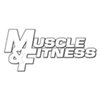Jacked is a journey. It's a rewarding trip on which we'd all like to embark - finishing up on the beach, of course, where heads turn in unison when you walk past. But, it's also an endeavor that takes time, hard work and the right collection of exercises arranged in the proper order, in conjunction with a diet that backs it all up.
This program (both the 7-day workout plan and the mass-gaining diet that follows) gets it done. It's the way to work your ass off in the gym doing the most effective exercises while eating tons of food (some of it so decadent it will shock you) and watching fat melt off.

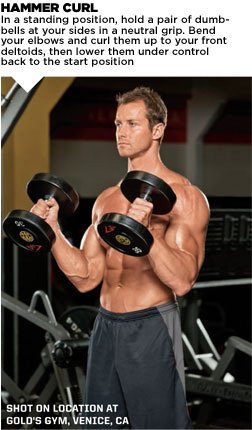
We're giving you a protocol used thousands of times with thousands of clients, that's a surefire way to get ripped and huge without having to worry about anything other than busting your ass.
On the workout chart that follows, you're shown what to do for all seven days of the week.
You'll be training your upper and lower body twice weekly, with one main day and one accessory day for each.
The other three days of the week include two cardio days and a day of rest.
It's important to work this 7-day progression in order, so lay out your workouts appropriately for your work or school schedule because you'll be doing the same thing every week for eight weeks or more, if you're still making progress and want to keep going.


Your first day is your main upperbody lifting day. The idea here is to perform three hard, heavy exercises with a lot of rest - 2-to-3 minutes - between sets.
You'll have to go all-out here, stacking as much weight as you can on the bar for the requisite number of sets and reps.
As a guide, this workout should take 45-to-60 minutes. Any shorter than that and you're not resting long enough between sets.
Day 2 is an upper-body accessory work day. Here, you're performing two exercises Shockwave-style and three in more conventional fashion.
Your goal on this day is to provide a huge growth stimulus to your triceps, biceps, lats and delts, and this session should last 30-to-45 minutes. Again, we've given you the number of sets and reps to perform, so adjust your rest periods accordingly.
Your two lower-body days work the same way, with Day 4 focused on heavy lifts and Day 5 providing high-volume assistance work. The workout times for each correspond to their upper-body counterparts.

When examining the workout, the first thing you'll likely notice is that there aren't a lot of exercises listed on each day - especially on your main upper - and lower-body days, where you're asked to perform only three movements. Don't be fooled, however, because it's not solely quantity we're after here, at least in terms of the different types of exercises you need to do.
When it comes to exercise selection, the main idea with this program quality, high-impact moves and work them into the ground. In other words, if you want to build massive legs, you can't just do a few sets of squats and then move on to something else.
You have to make your sets hard and heavy, staying in the squat rack and leaving your effort there on the floor until you don't have anything left to give.
Prepare yourself for a heavy dose of good, solid hard work and spend the next eight weeks getting huge.
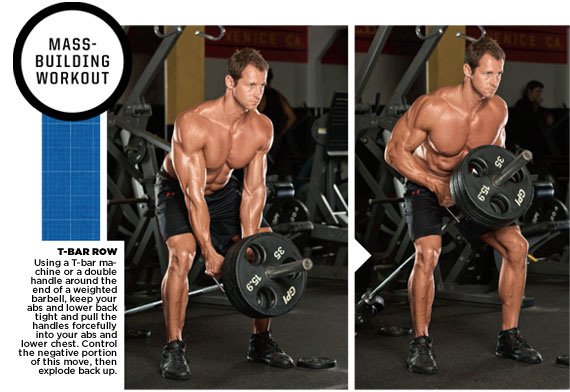

Shred fat and recover faster by conditioning your cardiac system the right way.
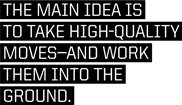
Don't think of your conditioning work as "cardio," because it's so much more than that. The mission here is to improve your General Physical Preparedness (GPP), or work capacity, by keeping your heart rate in the 120-to-130 BPM range for 60-to-90 minutes twice per week.
The goal of this type of energy system development is to develop a better level of cardiac output. A strong heart will improve your health and help you recover more quickly from hard workouts, which in turn will allow you to train harder and more often.
The type of work you perform isn't as important as its duration. You can drag sleds, flip tires, swing a sledgehammer, or jog.
Simply keep going for the prescribed time, working your way up in duration, not in intensity or heart rate.
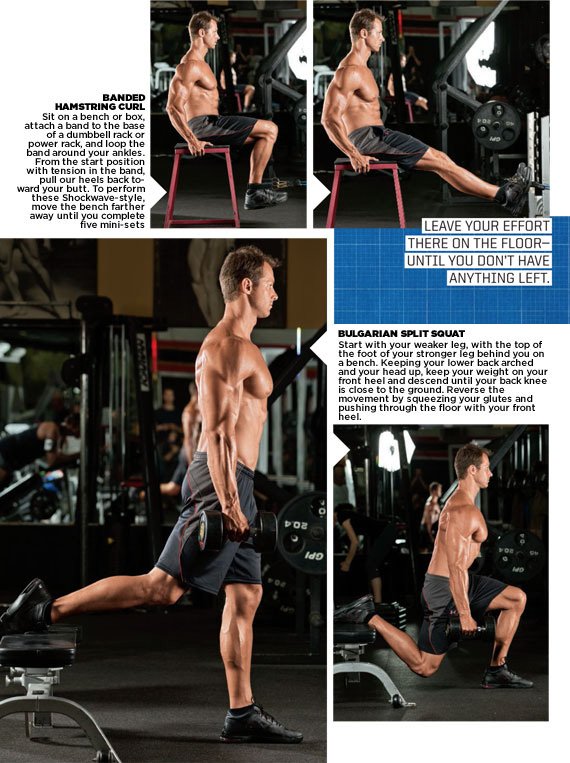

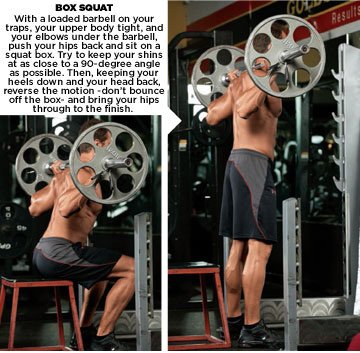
These mini-sets will be a brutally hard addition to your arsenal.
Developed by nutrition and training specialist John Kiefer, Shockwave-style sets are a series of mini-sets that progress from lighter to heavier weight over five sets of four reps for a total of 20 reps for each round.
When working with dumbbell exercises like rolling dumbbell triceps extensions and Bulgarian split squats, set yourself up close to a dumbbell rack so you're able to swap dumbbells quickly, keeping your rest periods between mini-sets as short as possible.
A typical Shockwave set for dumbbell exercises looks like this:
20x4, 25x4, 30x4, 40x4, 50x4
Your time under tension is also important with Shockwave sets. Use a 3-second eccentric (negative portion of the move), then explode upward, moving the weight quickly back to the start position.


|
||||||||||||||||||||||||||||||||||||||||||||||||||||||||||||||||||||||||||||||||||||||||||||||||||||||||||||||||||||||||||||||||||||||||||||||||||||||||||||

Send "bad" food straight to your muscles, not your gut.
Gaining muscle should be fun. But the way some nutritionists write mass-building meal plans, it's anything but. They have you rigidly counting calories and planning your meals well in advance, making you choose from a short menu of bland foods. Fortunately, none of that is necessary. In fact, it's not as effective as the plan we offer here.
All you need to gain mass is a steady supply of calories, and the know-how to time your carbs properly. Here's how it works: eat protein foods, fats and vegetables up until your workout each day. After training, add carbs to the mix. The amount and type of carbs you eat will vary depending on what kind of training you did that day and when you did it (we have three options for morning, midday and night trainees).
You don't need to count calories or measure exact portions. On your heaviest workout days and accessory sessions, you'll be able to eat so-called "bad" carbs liberally - we're talking all the sugary and starchy foods most experts say to steer clear of-without gaining appreciable fat.
You can do this because resistance training changes the way your body responds to blood sugar spikes. For a few hours after lifting, carbs (especially the fast-digesting, high-glycemic kind) send a huge hormonal growth signal that only the muscle cells respond to. However, the effectiveness is contingent on your keeping carbs as low as possible in your pre-workout meals. If you get a blood sugar rush at any other time of the day, you're going to shut down your body's fat-burning process and store calories in your gut.
See "Good vs. Bad" in the meal plan below for a list of acceptable foods to eat postworkout, and pay attention to the eating prescriptions for each training day. Your diet on Days 1 and 4 will be different from Days 3 and 6, and so on. On the sample meal plans for morning, midday, and nighttime training, you'll see directions to consume "protein and carb meals" after your workouts. The guidelines for what to eat and how much pertain to which workout you're doing, and it's laid out for you in the respective "Heavy," "Accessory," and "Cardio" boxes on the following pages.
Where it says to modify your serving of your pre- and post-workout shake, we're referring to any whey isolate powder (pre) and whey isolate with waxy maize or maltodextrin (or any similar carb powder, for post) that you choose.

|
|||||||||||||||||||||||||||||||||||||||||||||||||||||||||||||||||||||||||||||||
